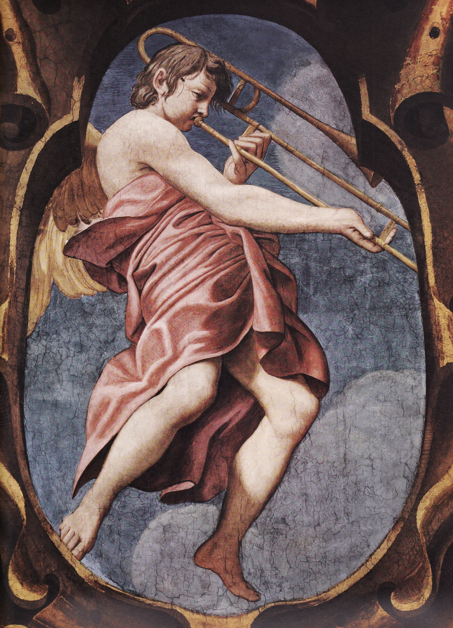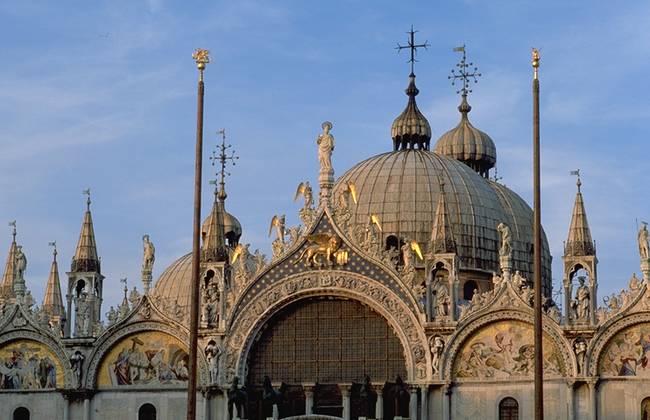
This is an online interactive edition of Monday's lecture. Use it as a starting point for your research for your historical perspectives papers. Brass instruments, and brass ensembles have been around for thousands of years. Your paper topic should illuminate one aspect of this rich heritage. You will find more specialized resources in journals, and books than on the internet in most cases. Focus on a topic or subject before the 20th century. To understand brass ensembles as a genre, it is necessary to examine our past.
Brass Ensemble History
A. Prehistoric - brass functioned as signals (shells, animal horns)
B. Antiquity
C. Middle Ages
1. Sacred vs. secular
2. Early Brass: Serpant, Sackbut, Cornetti, etc.
3. Minstrels, troubadours/trouveres?, Brass associated with royalty & battle
D. Rennaissance
E. Baroque
1. Polychoral/antiphonal brass ensembles;
2. Use of natural horns, trumpets;
3. Birth of opera, chamber music
4. Brass players “let indoors” (Monteverdi
L’Orfeo - 1607)
F. Classical
1. More brasses incorporated into orchestra
2. Harmoniemusik, Tafelmusik,
Serenades
3.
Eggert &
Beethoven use trombone section in orchestra
G. Romantic
1. Major developments:
a. 1815 -
valves patented
b. 1835 - tuba patented, brass choir (SATB) complete
c. 1865 -
Civil War, regimental bands, saxhorns
2. Composers write for full brass section (Wagner, Berlioz, Tchaik., Strauss)
H. Modern (end of 19th C., beginning of 20th)
1. First brass quintets, sextets
- Bellon (1795-1867) 12 Quintets written between 1848 and 1850
- Alyabyev [Aljabjew] (1787-1851)
- Ewald (1860-1935)
- Böhme (1870-1938)
- Maurer (1789-1878)
2. Modern brass bands, brass choirs, trios, quartet, quintets, etc.
3. Modernists, extended range, extended techniques
Online Resources:
Related Grove Online Articles:
Journal Articles (Ewald & Russian Traditions):
- Smith, André. “Brass in Early Russia: From the Beginnings to the Birth of Victor Ewald, 1860.” International Trumpet Guild Journal. December, 1993, pp. 5-20.
- _______ “Victor Vladimirovich Ewald (1860-1935) Civil Engineer & Musician”. International Trumpet Guild Journal. February, 1994, pp. 5-23.
- _______ “The History of the Four Quintets for Brass by Victor Ewald. International Trumpet Guild Journal. May, 1994, pp. 5-33.













